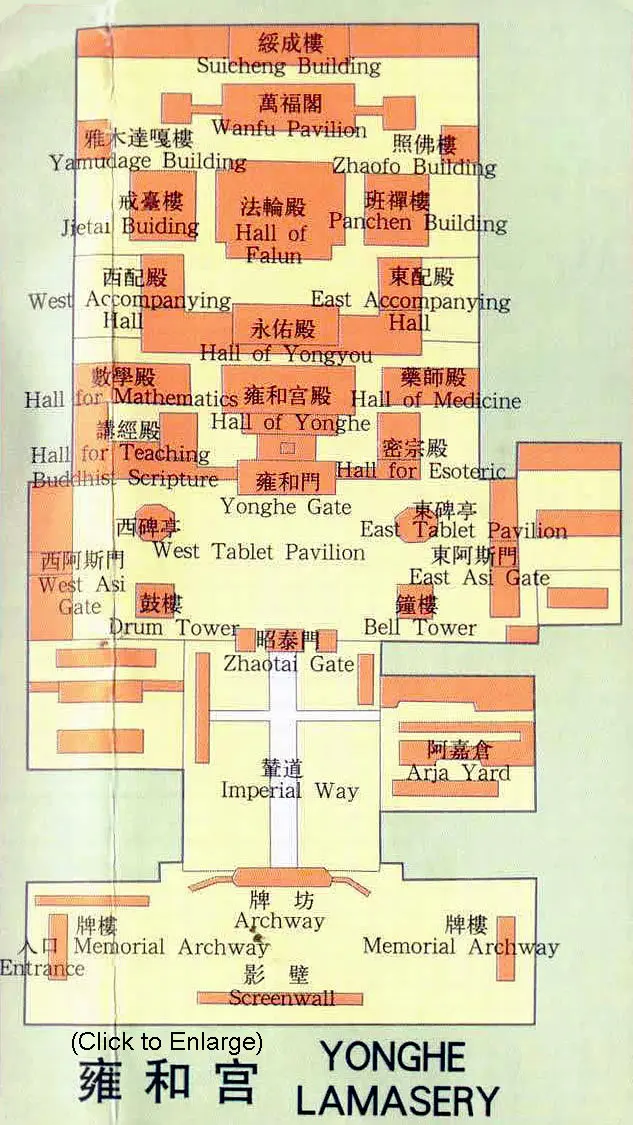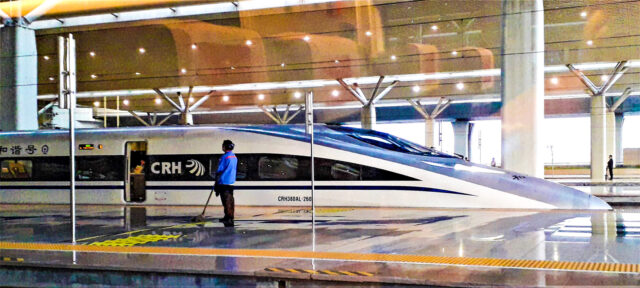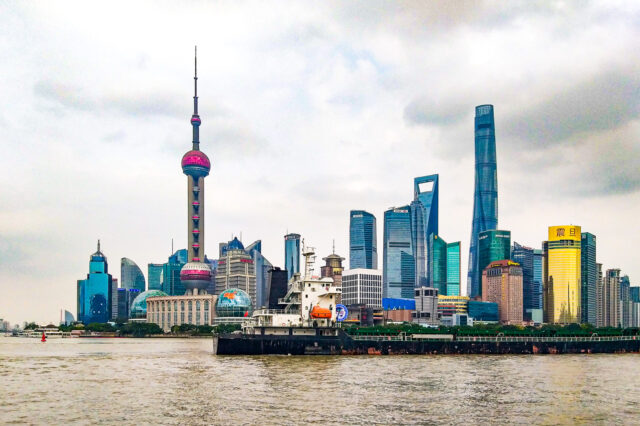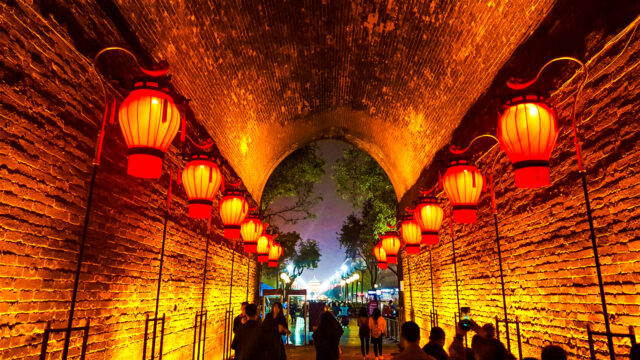Beijing, a city of 22 million people and the most touristy city in China is often the entry point for tourists. Its beautiful architecture, historical monuments, gorgeous parks, arts and crafts, atmosphere, food and many other characteristics make it one of the distinct cities and, understandably, very attractive for tourists. Needless to say, we were among those fascinated tourists 🙂
China’s capital has a history of almost 3 millennia and it’s not surprising that it counts 7 UNESCO World Heritage sites. Beijing has undergone many different eras from being a small less significant city to being a capital. Its prosperity started fro 1403, when it became the Imperial capital. The monuments built in the 15th century (Forbidden City, Temple of Heaven) still remain the most prominent here.
Useful tips for visiting Beijing
Below I will list the Beijing-specific tips. For general tips for visiting China, which also applies to Beijing, please, see the relevant post here.
- My number one advice to anyone visiting Beijing is to find accommodation near metro, unless they want to lose lots of time and money on taxis and/or buses. We were happy to find someone at the hotel, who spoke a bit of English and prepared for our sightseeing.
- The city is vast, so wherever you stay, you will need to use transport quite a lot. If you are staying at least a few days, you should get Yikatong card, which costs 20 yuan, you then charge it and use for all transport around the city. Metro is a great option, it’s convenient, easy to orient, very clean and even has toilets at every stop. Buses aren’t as easy to figure out, unless you can read and understand some Mandarin. Although the apps may help, it’s still very difficult to use buses.
- Hardly anyone spoke any English. But people were very nice and tried to help using WeChat. We also used Google translate to try to communicate, whenever we needed something.
- As a foreigner you don’t have to book any sightseeing spots, you will be visiting. While locals have to buy tickets online in advance when visiting some places, like Forbidden City, foreigners are still allowed to get tickets on the spot at the ticket office. Given that it would be very hard to book in advance using Chinese sites, we bought all tickets there and encountered no issues.
- Make sure to have your passport with you at all times. The reason for this is firstly, that Chinese law requires this. Secondly, passport is often used, as a ticket to many attractions, like in Forbidden City. So if you don’t have it with you, you can’t enter.
- Air quality in Beijing (like in many spots around China) is often quite bad. That’s the reason, why locals often wear masks, not just to protect themselves from COVID.
Arrival Day
I am not counting this day in the itinerary, as this day will only be dedicated to getting into the city and orienting yourself. As tons of other people, we also arrived to the Beijing international airport to start our visit to China. From the first moment, we felt the sheer size of the place. The airport itself is vast.
See the detailed information on how to clear immigration and get to the city center.
After clearing the immigration, we needed to sort several things before we could go to our hotel. Firstly, the money exchange. We found the bank at the departures part of the airport . We were lucky that we managed to get to the bank before its closing time – 5 pm and we didn’t need to lose time on changing the next day.
Find detailed information about money, Sim card and other tips for visiting China.
Another issue to sort was finding the metro station and getting the Yikatong card and charging it sufficiently for several days
From the train we could see the crazy traffic of the city. It was the evening rush hour and we were happy not to be stuck in a car to enter the city center. Two metro line changes later, we finally got to our hotel in Hutongs.
Day 1 Itinerary
Tiananmen square
Free of charge
To get here take metro line 2 to Qianmen station from the south or line 1 to Tiananmen East and Tiananmen West from the north. We walked from the south, passed the crowds waiting to get into the Mausoleum and got to the gates of Forbidden city.
I bet you have seen this square in numerous photos and heard a lot of it. The Tiananmen square is currently the world’s largest square. It can fit about a million people at one time. We headed there on our first morning in Beijing very early in the morning.
As you get out of the metro station, to enter the square, you have to go through security check and show your passport. Actually, the passport is needed in several places, including to enter Forbidden City, so don’t forget to bring it with.
Once we neared the square, we saw the hugest number of people we have ever seen at one time. And it was an ordinary day, not even a weekend. First, we didn’t understand, what all these people were queuing for, but then we realized it was to enter the Mao Zedong mausoleum. If you aren’t familiar with this type of mausoleums, the idea is that his body is embalmed and people go to pay their respect.
The queue for entering the mausoleum was snaking around the whole square. I would assume, it would take these people about 3 hours to get inside. That’s some dedication. We decided to bypass the queues, as we were not planning to visit the mausoleum.
Walking around square, we saw the huge celebratory signs, dedicated to the 70th anniversary since founding the Republic. We could hardly see any foreign tourists among the numerous Chinese visitors here. I can only imagine what it would be like during the national holidays.
If you are planning to visit the National museum of China (entrance is free), it is located east of the square. We didn’t visit any such museums, while in China, as all places we visited were museums themselves and we wanted to see everything in its glory. However, the Chinese museums are some of the most fascinating and next time, with more time, I do plan to go to the museums as well.
The Tiananmen square is also where flag raising and lowering ceremony is taking place every day. The ceremony is linked to the sunrise and sunset. When we visited in October, the flag raising was before 6.30am. Here is the timetable to check when it will happen on the dates you are visiting.
Forbidden City
Price: 60 yuans
From the Tiananmen square, we headed to the Forbidden City.
Find the step-by-step guide to visiting the Forbidden City here.
We spent basically the whole day in the City, wondering around the many buildings and taking in its grandeur.
You will finish your visit in the North side of the City. After exiting the Gate of Divine Prowess, it would be rather difficult to find any transport to leave the area. The nearest metro stations are quite a long walk away and figuring out the routes of the buses is really complicated, as there is no English information online or on the spot.
Jingshan Park
Price: 2 yuans
I suggest heading up the Jingshan park hill. For this, you will have to cross the street. You will find the underground passage on your left after exiting the city.
The climb of 300 stairs is definitely worth it. It’s not very difficult. My mom managed to slowly go up. If you have limited mobility, keep in mind to take the stairs, which you see immediately after entering the park on your right side. They are the stairs with easier steps. The other routes seemed far more difficult to climb with higher and uneven steps.
During the Ming and Qing dynasties, the park served, as royal gardens. At the top of the hill, you will find the Wanchun Pavilion, a beautiful building, which offers wonderful views over the Forbidden city. The place is very crowded immediately before and during the sunset, as most people visit after visiting the palaces and it provides gorgeous sunset views. So if you have more time in Beijing, you can come here at another time to enjoy less crowded park.
There are also 4 other pavilions around, if you have time to explore more. Towards the North you will also find the Hall of Imperial Longevity, which served, as the place, where Qing Emperors paid respect to their ancestors.
If you are visiting the park in spring and summer, it has beautiful flower gardens, which you should check out.
After visiting the viewpoint, it was already dark, when we came down. So we didn’t continue our sightseeing for the day. If you are here in summer or have more time, head to the Beihai park next. It is closeby, at 15 minutes walking distance and definitely worth a visit. You can leave the area through the Beihai North metro station.
Wangfujing Road
We walked to the Wangfujing road from here to find food and see the famous street. This is a pedestrian road, where you find a number of malls, restaurants and the stalls outside. This is supposed to be the busiest street in the city. You can find many stores here selling everything from tea to crafts to silk.
However, during the evening we visited, we didn’t find as many people, as we expected. We don’t know if it was not the right day, or if the area is no longer the heart for the night walks.
We entered one of the malls to find the restaurant called Grandma’s. we were not disappointed in it. The restaurant chain originated in Hangzhou, so they offer food from this region. This branch (as I believe other branches) is very popular, so we had to wait about half an hour. You will get a number and a menu to choose your food, while waiting. This was a good thing, as we took a lot of time, understanding what we would eat. The menu was in English though, but not being used to Chinese food, it was still confusing 😊 We were still happy with our choices. Oh, yes, the plastic forks we brought along helped for sure.
If you prefer to try street food instead, inside the Haoyou World Mall, one can find Wangfujing Snack Street, which after closure of the famous Donghuamen Night Market, is the main place for finding street food during evenings.
Day 2 Itinerary
Great Wall of China: Mutyaniu section
Entrance ticket price: 45 yuan, Cable car return ticket: 120 yuan.
I chose this section of the Wall after a long deliberation.
If you come back from visiting the Great Wall early in the day and still have energy and daylight to explore, I suggest to either head to Lama Temple or Beihai park (see the description of these in the day 4 itinerary).
Sanlitun Area
After coming back, we headed to the Sanlitun area to enjoy the Peking duck. We were already closeby after coming back from visiting the Great Wall. If you go from Dongzimen area, you will be closeby as well. The Peking duck was one of the things I wanted to try when in Beijing. We went to the popular Jingzun restaurant for that. We had to wait about 20 minutes, as basically every restaurant we visited in Beijing. The place was very crowded, as seems it’s popular with the locals. Well, Peking duck wasn’t my favourate food, it was too greasy for my taste and the sweet sauces aren’t my thing, but at least, we tried it and we knew we tried a good option, as it should be done 😀
You can walk around the Sanlitun area. It is a very popular evening destination, particularly, on the weekends. There are a number of cafes and restaurants here, and it’s very lively.
Day 3 Itinerary
Beijing Zoo
Price including Panda House: 20 yuan.
Before heading to Summer Palace, which would take most of our day, we decided on a short visit to the Zoo. I do know that Beijing zoo is not the best spot to see pandas, but we didn’t have enough time to go to Chengdu, so this was the option we had.
The zoo is really easy to get to. It is on the same metro line, the Summer Palace is, that’s why we decided to combine visiting these two places in one day. The metro stop is called Beijing Zoo station, exit D is just next to the Zoo.
The section, where you find Giant pandas, is close to the entrance on the right side. That was our main aim of coming here and we watched the pandas go about their lives. Of course, the conditions of the zoo in general aren’t that great, but this zoo is quite well-maintained.
Summer Palace
Combo ticket price (in high season): 60 yuan.
After walking in the Zoo some more, we headed back to the metro to go to the Summer Palace.
See the detailed information and tips on the tickets, routes, accessibility, as well as photos here.
Starry Street
If you end your visit at the East Gate, it is about 10-minute walk to the Xiyuan metro station. Nearby the station you will find the starry street shopping area with a number of cafes and restaurants. I do recommend the Green Tea restaurant. It has beautiful atmosphere and good food and isn’t too expensive. We came here in the evening at about 7pm and had to wait for our table for about half an hour, but we were used to this in Beijing and it was worth the wait. You will also get a menu meanwhile, so that when you get inside, you already know what to order.
Later in the evening, you can visit one of the theatres to catch an acrobatic show, like the Kung Fu show at the Red theatre or, alternatively watch the Beijing opera at the Liyuan Theatre. Tickets for some shows can be obtained on the spot, while others better be pre-booked, as they may sell out.
Day 4 Itinerary
Temple of Heaven
Through ticket Price: 35 yuan
Early morning, by 8am we were already at the Temple of Heaven. I do suggest to get here as early as possible, if you can, even by 6am, when the gates open.
See the detailed guide and route for visiting the Temple of Heaven here.
Lama (Yonghe) Temple
Price: 25 yuan.
From Tiantan East station take line 5 directly to Yonghegong station. The Llama Temple entrance is nearest to Exit F. Keep in mind that the entrance and exit to the temple complex is at the South side and the gates at the north side are closed. We didn’t know this and exited metro from the north side, which made our road longer, so best is to exit from exit F.
The area of the Llama temple complex is much bigger than we anticipated. Here is the map to give you an idea.

This is the functioning budhist temple, which allows you to observe the local practices. Be respectful to the praying people you will see everywhere. You can even get the incense at the entrance for free, if you want to participate in the prayer.
You start from visiting the smaller statues and work your way to bigger ones. In the center of the complex is the Hall of Harmony and Peace, where you will find three golden buddhas.
By the end of your visit you will end up at the Pavilion of Ten Thousand Happiness, which houses thousands on buddhas located on many levels and the biggest sandalwood buddha statue in the world. This Buddha is carved from a single piece of wood. It is 18 m tall with 8m underground (so 26m overall). The statue actually was included in the Guinness Book due to its size. It is impossible to take a proper photo of this statue, as you can see from my pitiful attempts 😀
Confucius Temple is located very close to the Llama temple and you can visit it too. Given that it’s less popular with toutists, you will find it much quieter.
Bell and Drum Towers
Price of Bell tower: 15 yuan; Drum tower: 20 yuan; Combo ticket: 30 yuan.
From Yonghegong station take line 2 and get off at the Gulou Dajie station. After this walk south on lively streets to the Bell and Drum Towers.
The Beijing Bell and Drum towers, as those of other cities served a specific purpose in the old times. The bell was rung to inform the population of the dawn, while the drum beat meant the sunset. If you did or are planning to visit the Xi’An Bell and drum towers, you may give this a miss, as the latter are the best preserved and biggest of their kind. If not, do visit them in Beijing.
Hutongs
From here head towards the Houhai lake and the hutongs. This is a very lovely shopping area with narrow streets, where you will find any sort of trinkets you desire from umbrellas and bags to scarves, toys, fans, etc. The cute bridges on the lake are also very picturesque. We crossed the bridge in the middle of the lake. This way you will end up at the Hutongs.
The route for us to explore hutongs was confusing for me, so here is a map, that may help a bit:
Hutongs are an important feature of Beijing. The city consists of numerous Hutongs. The word means water well – a place around which people lived. So the Hutongs were developed as a combination of a number of courtyards. While exploring the area, we marveled at the old houses, and mansions in the area.
Prince Kung Mansion (see above on the map) here costs 40 yuan. Constructed in the 18th century, this mansion is a great example of Chinese courtyard architecture. You can choose this or another of the mansions (like Residence of Soong Ching Ling, or Prince Chun mansion) to visit, depending on your interests.
Actually Hutongs are numerous around Beijing. You can spend days exploring them. However, with only 4 days in Beijing, a little exposure has to be enough.
Beihai Park
Beihai park is very close to the hutongs you were walking around. This was a really lovely park with a lot of locals attending dance classes, children playing, people performing daily exercises, etc. It was wonderful to see. Spend as much time as you like and can, you won’t be bored. The lake inside the park has great views. You will also find the golden fishpond.
You can head east from here and explore more of Hutongs or you can head to the Qianmen street and walk around the closed street and its side streets with its numerous shops and restaurants.
Additional days in Beijing
If you have more time or more days, there are a number of other things you can do in and around Beijing. The city is huge and offers a lot of opportunities. You could visit:
- 798 Art zone,
- National Museum of China,
- Old summer palace,
- Olympic park area,
- Kunming lake,
- Botanical garden, etc.
See also:




